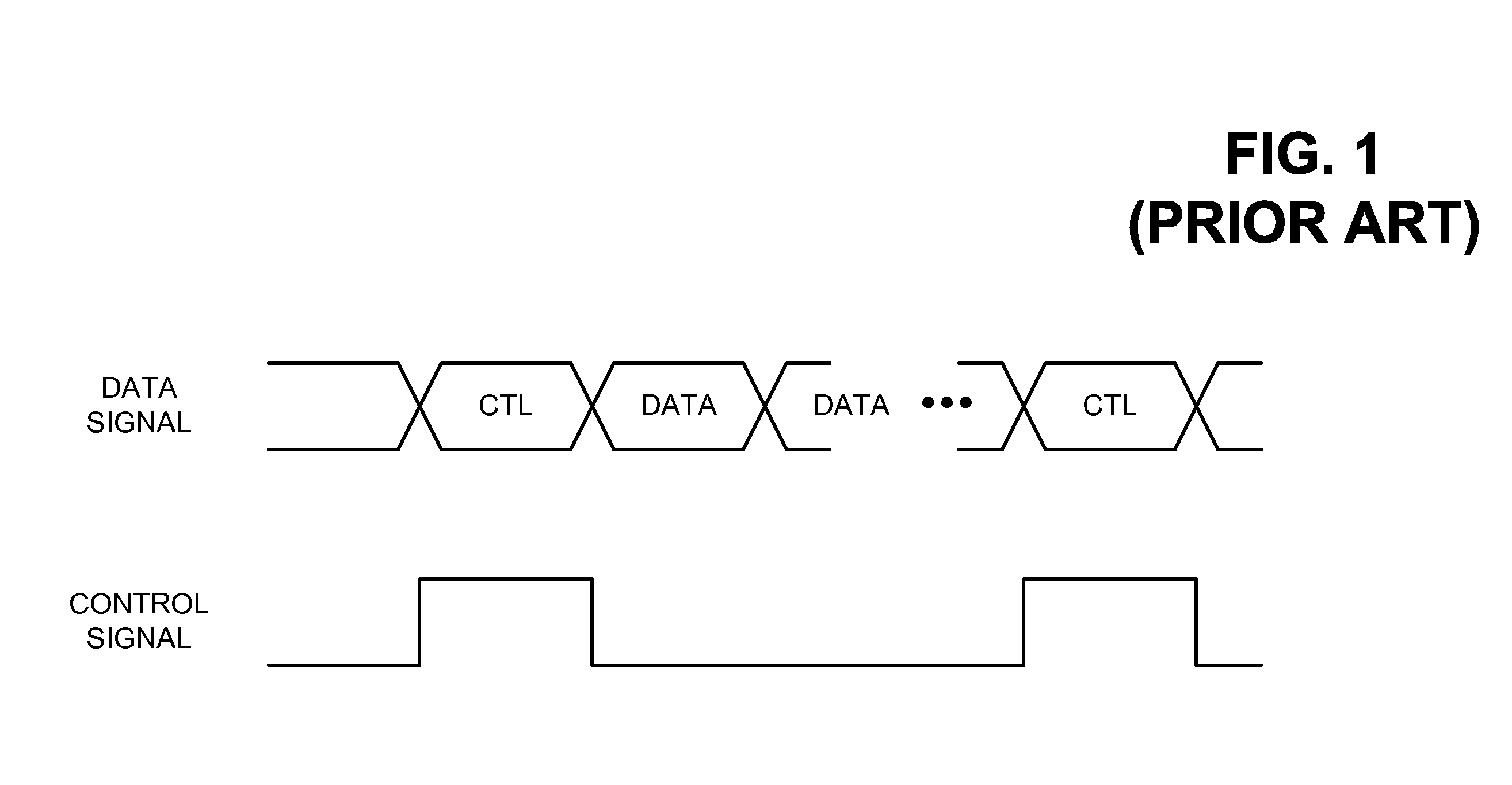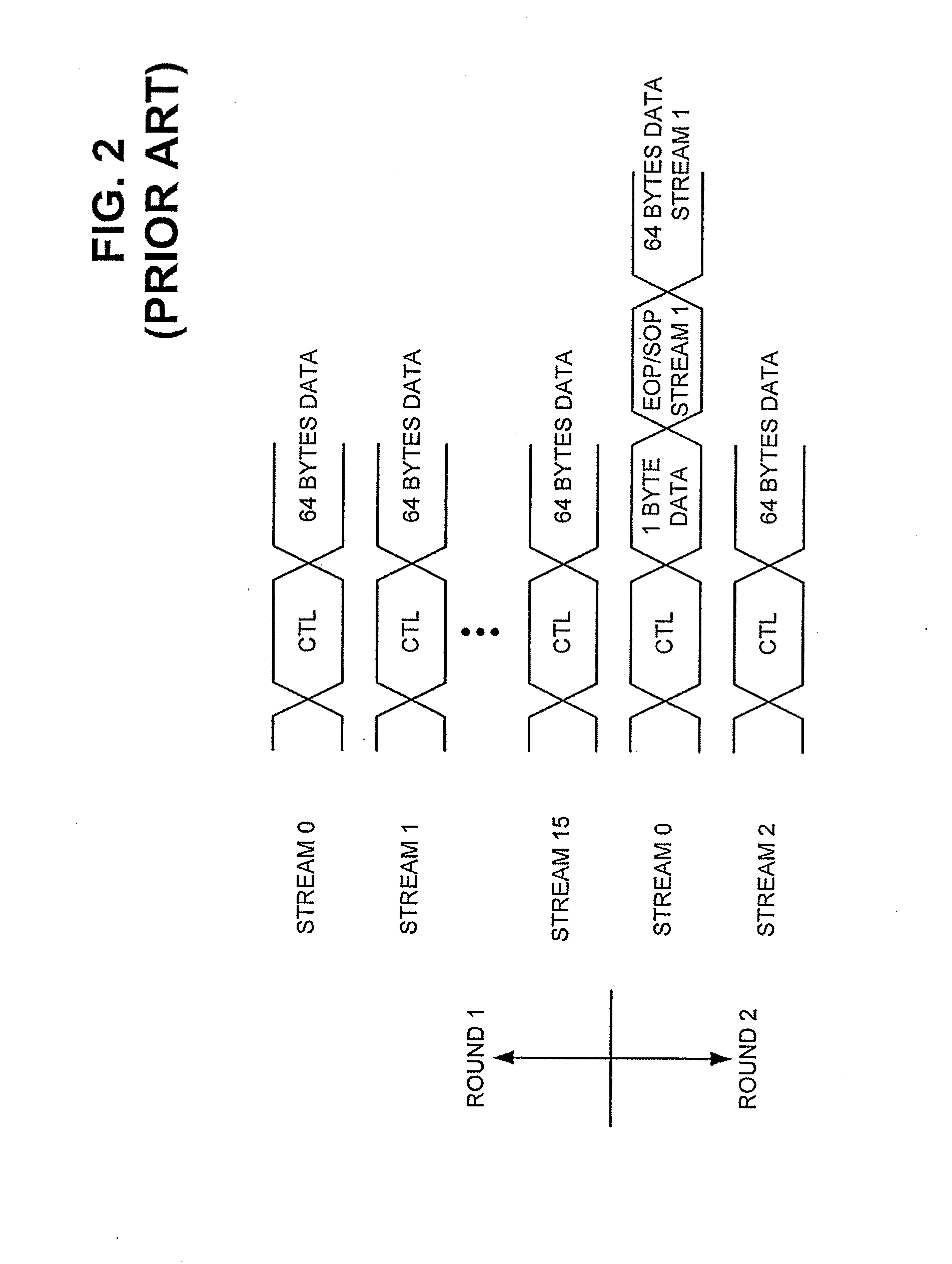Scheduler for transmit system interfaces
a transmission system and scheduler technology, applied in the field of data transfer, can solve the problems of stream b>0/b> losing much of its allocated bandwidth (approximately 50%), stream b>0/b> simply losing its fair share of bandwidth, etc., to achieve the effect of balancing bandwidth used and bandwidth used
- Summary
- Abstract
- Description
- Claims
- Application Information
AI Technical Summary
Benefits of technology
Problems solved by technology
Method used
Image
Examples
examples
[0068]To illustrate the above processing, assume that stream 0 includes 65-byte packets and streams 1-15 include 64-byte packets. Assume further that the maximum burst size (max_burst_size) for streams 0-15 is 64 bytes. Counter 822 corresponding to stream 0 may increment in the following manner: 1 (bytes 1-16); 2 (bytes 17-32); 3 (bytes 33-48); 4 (bytes 49-64); and 1 (byte 65 / EOP). Decision maker 820 may then determine the number of additional bytes from: ((max_burst_size / 16)−count)*16. Using the above values, decision maker 820 determines that ((64 / 16)−1)*16=48 additional bytes should be added at the end of the current packet burst.
[0069]FIG. 11 is an exemplary data flow that illustrates the above example. During the first round of transmissions, transmitter 630 transmits 64 bytes of packet data for each of streams 0-15. During the next round, stream 0 has one byte left of the 65 bytes of packet data. In this case, transmitter 630 transmits a single byte of packet data for stream 0...
PUM
 Login to View More
Login to View More Abstract
Description
Claims
Application Information
 Login to View More
Login to View More - R&D
- Intellectual Property
- Life Sciences
- Materials
- Tech Scout
- Unparalleled Data Quality
- Higher Quality Content
- 60% Fewer Hallucinations
Browse by: Latest US Patents, China's latest patents, Technical Efficacy Thesaurus, Application Domain, Technology Topic, Popular Technical Reports.
© 2025 PatSnap. All rights reserved.Legal|Privacy policy|Modern Slavery Act Transparency Statement|Sitemap|About US| Contact US: help@patsnap.com



